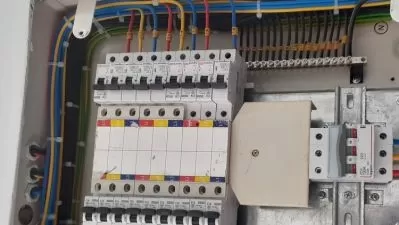Design Of Power Screw
2:44:59
Description
Design, Terms, Efficiency, Torque, Threads Forms, Calculations
What You'll Learn?
- Understanding Key Concepts
- Torque Analysis and Design
- Efficiency Evaluation
- Comprehensive Design Application
Who is this for?
What You Need to Know?
More details
DescriptionThis course provides a comprehensive overview of power screws, focusing on their terminology, design principles, and performance analysis. Students will explore the mechanics of square and trapezoidal threads, gaining insights into torque analysis and the factors influencing efficiency and self-locking capabilities.
Key topics include:
Terminology of Power Screws: Understanding fundamental concepts and definitions related to power screws, including thread types and applications.
Torque Analysis and Design: Analyzing the torque requirements for power screws and the design considerations for optimal performance.
Collar Friction Torque: Examining the effects of collar friction on the operation of screws and methods to mitigate its impact.
Self-locking Screws: Investigating the criteria for self-locking in screw designs and the implications for safety and functionality.
Efficiency Analysis: Calculating and comparing the efficiencies of square threaded screws and self-locking screws, highlighting factors that influence performance.
Design of Components: Principles and practices for designing screws, nuts, and C-Clamps, emphasizing real-world applications.
Screw Jack Design: Exploring the design and operation of screw jacks, including their mechanical advantages and applications.
Differential and Compound Screws: Understanding the theoretical principles behind differential and compound screws, including their unique applications.
Re-circulating Ball Screws: A theoretical examination of re-circulating ball screw mechanisms, focusing on their design advantages and operational principles.
This course combines theoretical knowledge with practical applications, preparing students to engage in the design and analysis of various screw mechanisms in engineering contexts.
Who this course is for:
- Mechanical Engineering Students: Undergraduate or graduate students specializing in mechanical engineering who are studying machine design and mechanics. Manufacturing Engineering Students: Learners focused on manufacturing processes and systems, particularly those involving mechanical components and assembly. Engineering Technologists: Individuals pursuing careers in applied engineering, specifically in roles related to design, production, and maintenance of mechanical systems. Industry Professionals: Engineers and technicians seeking to enhance their understanding of power screws and their applications in various mechanical systems, including those working in design, manufacturing, and maintenance roles.
This course provides a comprehensive overview of power screws, focusing on their terminology, design principles, and performance analysis. Students will explore the mechanics of square and trapezoidal threads, gaining insights into torque analysis and the factors influencing efficiency and self-locking capabilities.
Key topics include:
Terminology of Power Screws: Understanding fundamental concepts and definitions related to power screws, including thread types and applications.
Torque Analysis and Design: Analyzing the torque requirements for power screws and the design considerations for optimal performance.
Collar Friction Torque: Examining the effects of collar friction on the operation of screws and methods to mitigate its impact.
Self-locking Screws: Investigating the criteria for self-locking in screw designs and the implications for safety and functionality.
Efficiency Analysis: Calculating and comparing the efficiencies of square threaded screws and self-locking screws, highlighting factors that influence performance.
Design of Components: Principles and practices for designing screws, nuts, and C-Clamps, emphasizing real-world applications.
Screw Jack Design: Exploring the design and operation of screw jacks, including their mechanical advantages and applications.
Differential and Compound Screws: Understanding the theoretical principles behind differential and compound screws, including their unique applications.
Re-circulating Ball Screws: A theoretical examination of re-circulating ball screw mechanisms, focusing on their design advantages and operational principles.
This course combines theoretical knowledge with practical applications, preparing students to engage in the design and analysis of various screw mechanisms in engineering contexts.
Who this course is for:
- Mechanical Engineering Students: Undergraduate or graduate students specializing in mechanical engineering who are studying machine design and mechanics. Manufacturing Engineering Students: Learners focused on manufacturing processes and systems, particularly those involving mechanical components and assembly. Engineering Technologists: Individuals pursuing careers in applied engineering, specifically in roles related to design, production, and maintenance of mechanical systems. Industry Professionals: Engineers and technicians seeking to enhance their understanding of power screws and their applications in various mechanical systems, including those working in design, manufacturing, and maintenance roles.
User Reviews
Rating

Udemy
View courses Udemy- language english
- Training sessions 15
- duration 2:44:59
- Release Date 2025/02/24










